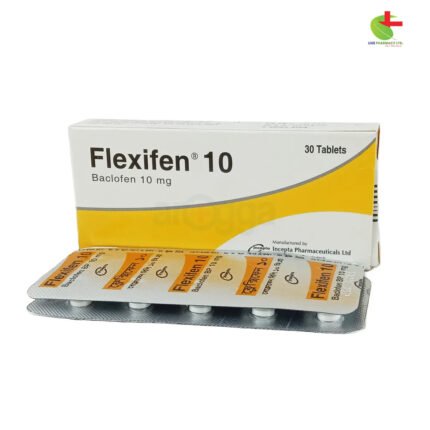Tridosil 500
105.00৳ Strip
- Tridosil is a broad-spectrum antibiotic indicated for various infections, including respiratory, skin, and sexually transmitted diseases.
- Its active ingredient, azithromycin, disrupts bacterial protein synthesis, targeting susceptible organisms.
- Available in both oral and injectable forms, Tridosil offers flexible dosing options for adults and children.
- Always consult a healthcare professional before use.
 Brand
Brand
|
Incepta Pharmaceuticals Ltd |
|---|---|
 Generics
Generics
|
Azithromycin Dihydrate |
 Type
Type
|
Tablet |
Indications
Tridosil is effective against infections caused by susceptible organisms, including:
- Lower respiratory tract infections (e.g., bronchitis and pneumonia)
- Upper respiratory tract infections (e.g., sinusitis, pharyngitis, and tonsillitis)
- Otitis media
- Skin and soft tissue infections
- Sexually transmitted diseases, such as non-gonococcal urethritis and cervicitis due to Chlamydia trachomatis.
Always consult a registered healthcare professional before using this medication.
Pharmacology
Azithromycin, the active ingredient in Tridosil, is stable in acidic conditions, allowing for oral administration without gastric protection. Its absorption is optimal on an empty stomach, with peak plasma levels occurring within 2.1 to 3.2 hours. Due to high concentrations in phagocytes, azithromycin is efficiently transported to infection sites, achieving tissue concentrations up to 50 times higher than in plasma.
The drug’s extended half-life enables single high-dose administration while maintaining effective levels in infected tissues for several days. Following a 500 mg dose, the mean terminal elimination half-life is around 68 hours, primarily excreted via the biliary route.
Microbiology: Azithromycin works by binding to the 50S ribosomal subunit in susceptible microorganisms, disrupting protein synthesis without affecting nucleic acid synthesis. It demonstrates effectiveness against various gram-positive and gram-negative bacteria, as well as specific atypical pathogens.
Dosage
Oral Dosage:
- Adults: 500 mg once daily for 3 days or a single 1 g dose for sexually transmitted diseases.
- Children:
- 10 mg/kg once daily for 3 days (for children over 6 months).
- Specific doses based on body weight (15-45 kg).
Injection Dosage (IV Infusion Only):
- Adults: 500 mg daily for community-acquired pneumonia or pelvic inflammatory disease, transitioning to oral azithromycin as clinically appropriate.
Always consult a registered healthcare professional before using this medication.
Administration
Reconstitution of Suspension:
- Shake the bottle to loosen the powder.
- Add boiled and cooled water to the indicated mark.
- Shake until fully mixed.
Azithromycin should be taken at least 1 hour before or 2 hours after meals.
Interactions
Antacids: Take azithromycin at least 1 hour before or 2 hours after antacids. Monitor digoxin levels if used concurrently, as azithromycin may elevate them. Avoid combining azithromycin with ergot derivatives due to potential risks.
Contraindications
Azithromycin is contraindicated in individuals with hypersensitivity to azithromycin or other macrolides, those with hepatic diseases, and when used with ergot derivatives.
Side Effects
Tridosil is generally well tolerated, with mild to moderate side effects primarily of gastrointestinal origin, including nausea and abdominal discomfort. Rare allergic reactions and reversible hearing impairment have been reported.
Pregnancy & Lactation
Pregnancy Category B: Animal studies indicate no fetal harm, but use during pregnancy should be considered only when no suitable alternatives exist. The secretion of azithromycin in breast milk is unknown, so caution is advised for nursing mothers.
Precautions & Warnings
Monitor for serious allergic reactions, including anaphylaxis.
Use in Special Populations
Renal Impairment: No dose adjustments are needed for mild impairment; caution is advised for more severe cases.
Hepatic Impairment: Not recommended for patients with liver disease.
Overdose Effects
Overdose symptoms may include hearing loss and severe gastrointestinal upset. Supportive care and gastric lavage are recommended.
Storage Conditions
Store in a dry place, away from light and heat, and out of reach of children.













Reviews
There are no reviews yet.